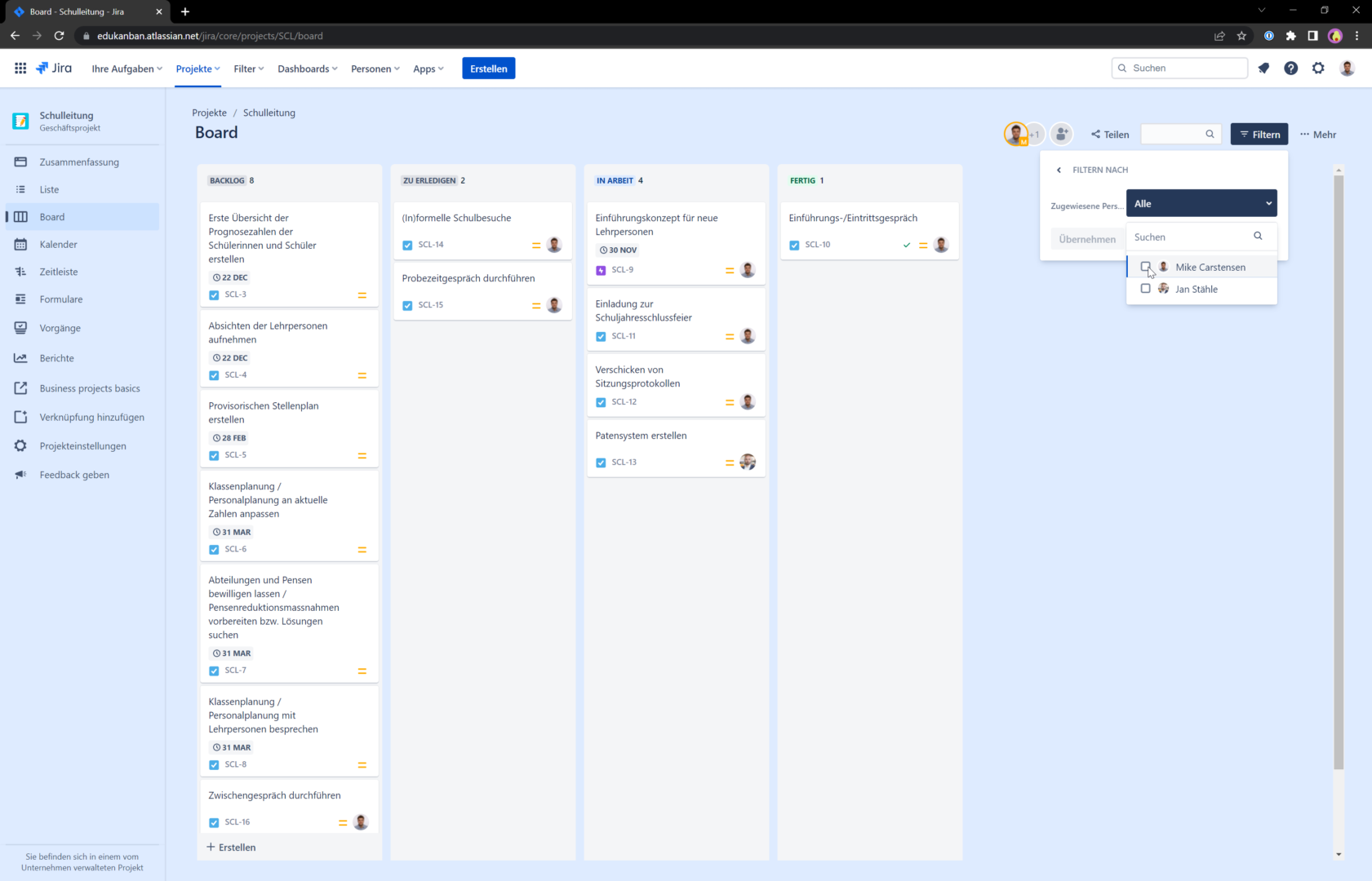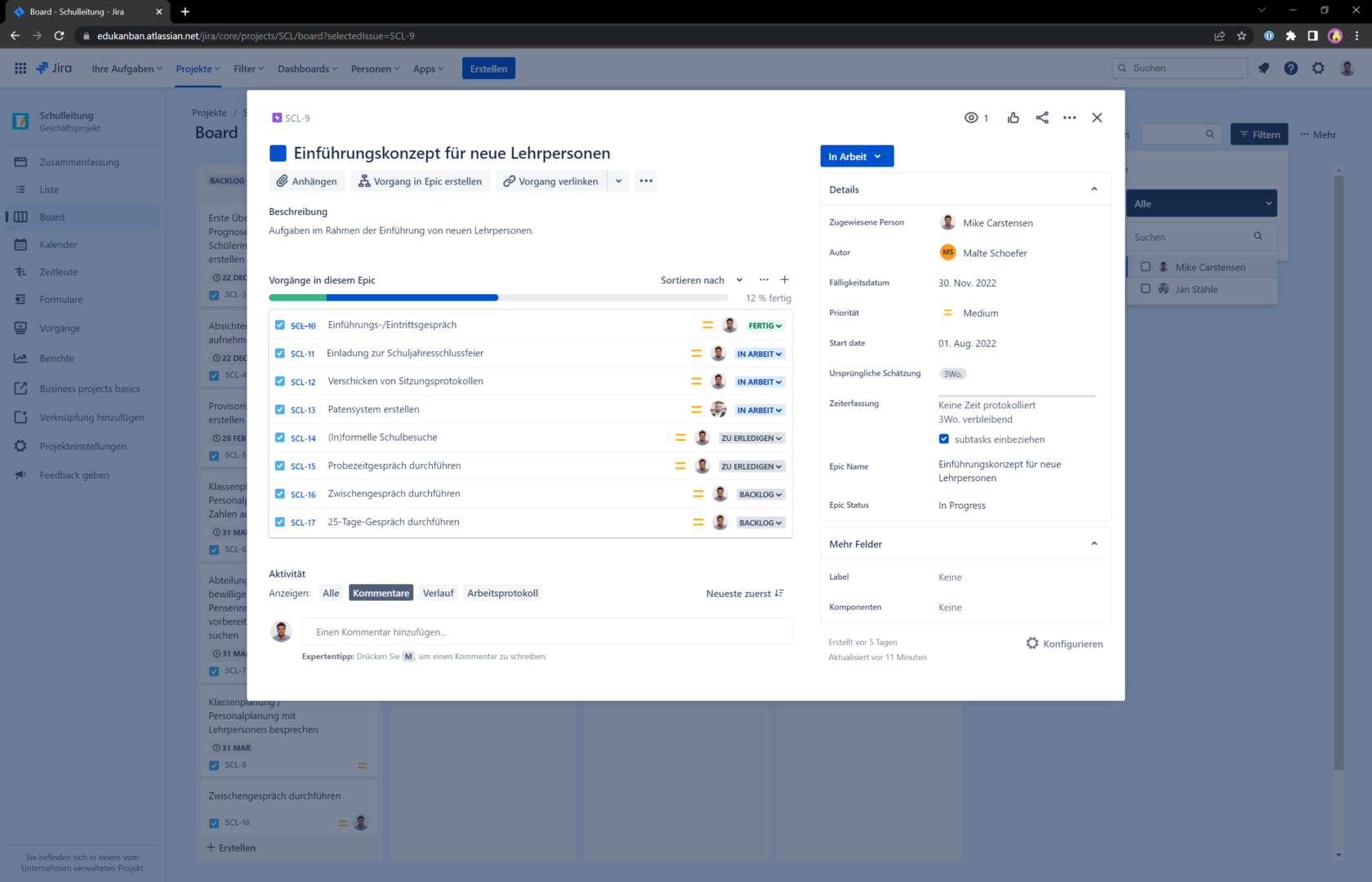EduKanban and the “half-life of knowledge”
But let’s start at the very beginning: What is knowledge management anyway? There are always debates about the half-life of knowledge. The only thing that is certain is that methodological skills are more in demand today than ever before. The Federal Institute for Vocational Education and Training states that half of school knowledge is still valid after around 20 years, university knowledge and professional expertise lose 50 percent of their current significance after ten to five years and half of usable technological knowledge “expires” after two to three years. IT knowledge currently only has a half-life of less than two years. One of the reasons for the increasing shortening of the expiry period is the steady and ever faster increase in knowledge.
Agility as an alternative?
Agility is increasingly finding its way into everyday working life. Teams should work in an agile and cooperative manner. But what exactly does this mean in everyday school life? Schools have changed a lot in recent years. Due to the many tasks that are tackled together, the importance of teamwork is increasing and the lone wolf is no longer in demand. But unfortunately, far too little light is shed on what is really behind this and how it is practiced. Even if it may seem simple, it is associated with many challenges. Schools today are increasingly reaching their limits. The “core business” is increasingly taking a back seat for teachers. The administrative workload for teachers is increasing. As teachers work with different classes and levels, a good overview is essential for survival. Everything has priority and therefore nothing has priority. The transformation of the school into an organization began with the introduction of school management. However, this does not necessarily mean that they have arrived in the school organization. EduKanban offers an end-to-end solution for this.
EduKanban can be used in a variety of ways. Leadership at all levels is promoted and the pull principle makes a decisive contribution to work regulation and rapid reaction to constantly changing circumstances. Teams continue to develop with the Kanban method in a school context. The aim of the method is to encourage the people involved to work together to improve their (work) system. This requires an awareness of where the agile method ends and clarity about the conditions that promote the willingness of the players.

Figure 1: EduKanban board for the school management
Our Product Range
Based on our experience, we deliver a complete package of methodology, coaching and technical implementation. This means that the added value is holistic and directly tangible right from the start, which makes it easier to take action. Our aim is to encourage the people involved to work together to improve their work system. The first step is to visualize the work currently being done using a real Kanban board. The focus shifts to finishing work that has been started, so that new work is only started when old work has been completed. The team collects its work (pull principle). This prevents more and more new work from piling up on a team, even though old work is far from being completed. People once again have the chance to concentrate on their work, create quality together and dedicate themselves to improving their work system. More is achieved with less overtime and stress.

Figure 2: Overview of tasks during the induction of new teachers (example)
Who is EduKanban aimed at?
EduKanban is primarily aimed at authorities, school administrators, teachers and pupils. However, it can also be used in administrations, communities and in the family environment. In addition to the possibility of self-organization in the teaching staff and as a method for agile school management, EduKanban can also be used directly in the classroom, where it “incidentally” supports methodological competence.
Incidentally, the term “Kanban” comes from the Japanese language and means “signal card”. Kanban was originally used in production at Toyota, from where it influenced software development and collaboration in other areas. The aim is to avoid bottlenecks and blockages and thus establish a steady and orderly workflow.
Further information directly from us via info@generativ.ch or at: https://www.edu-kanban.org/
About us
We are Simone Ackle-Lüchinger (Wertwandler GmbH) and Mike Carstensen (generativ GmbH). We support people in working together and create new opportunities to use the “learnings” of the past for the future and to reshape it. Our heart beats for evolutionary methods, well-structured learning and preparing students for the world of tomorrow.
Sources:
https://www.bibb.de/dienst/veroeffentlichungen/de/publication/show/16571




